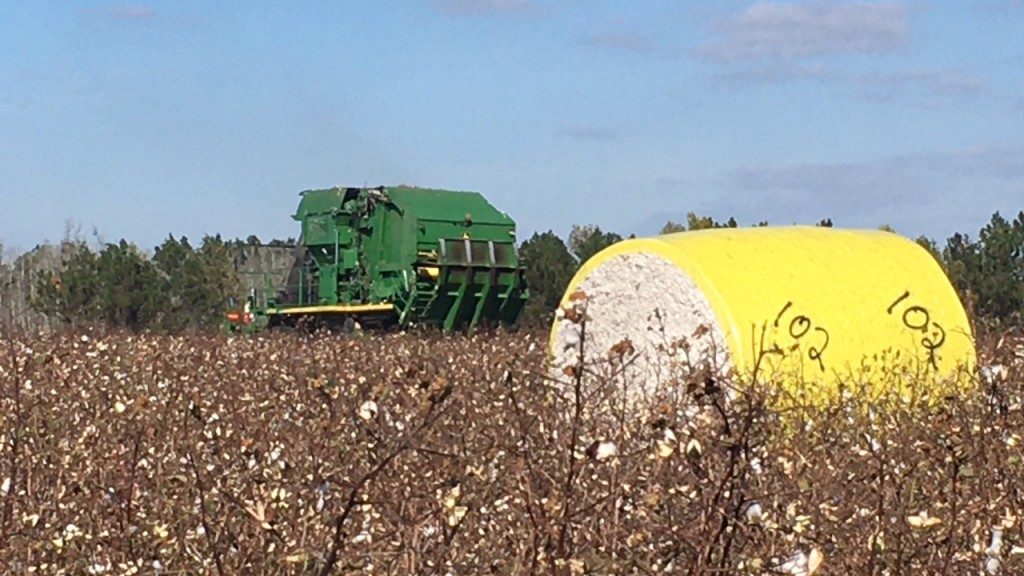Below are a few words from Phillip Roberts, UGA Cotton Entomologist.
Thrips are consistent pests of cotton, infesting near 100 percent of Georgia cotton each year. Thrips are the only insect pest of cotton that a preventive insecticide is recommended. A preventive insecticide should be used at planting for thrips control. UGA recommends a reactive approach based on scouting and the use of thresholds for other insect pests in cotton. Pests such as stink bugs, corn earworms, whiteflies, and others are less consistent and demand this reactive approach to maximize profitability. With most insect pests there are agronomic and management practices which influence the risk and severity of infestations. Below are a few thoughts to consider as you make decisions for your at-plant thrips management program.
1.Use a preventive insecticide at planting. Positive yield responses are consistently observed in UGA research when an at-plant insecticide is used for thrips control.
2.At-plant insecticide options include in-furrow granule applications of aldicarb, in-furrow liquid applications of imidacloprid or acephate, and commercial seed treatments of imidacloprid, thiamethoxam, and acephate. Imidacloprid seed treatment is the most common at-plant insecticide used. In-furrow applications of aldicarb, imidacloprid, and acephate tend to provide greater residual control of thrips compared with the commercial seed treatments.
3.Historically thrips infestations and plant injury is greatest on early planted cotton (ie planted prior to May 10th). However, this high thrips risk window is a moving target from year to year. Temperature and rainfall during winter and early spring have a significant impact on thrips population development and the severity and timing of infestations moving to cotton. As we near planting you are encouraged to take advantage of the Thrips Infestation Predictor for Cotton. This web-based tool will predict thrips risk by planting date by geographic location and can be found at: https://climate.ncsu.edu/CottonTIP .
The figure below illustrates the Predicted Thrips Injury Risk for April 13, 2020 in Moultrie, GA. The range of dates shown includes the number of dates (1) before and after the selected planting date and the interval between dates (5 days). Predictions are provided as relative thrips injury risk expressed on both color and numerical scales (dark green or 0 = lowest risk; dark red or 1 = highest risk). Thrips injury risk levels are relativized across all years and dates shown. The date having the lowest risk during the six year period is designated by the darkest green and has a value of zero. Similarly, the date having the highest risk of thrips injury within the period is designated by the darkest red and has a value of one. All other dates shown have thrips injury risk values between zero and one, and colors ranging from red (high risk) to green (low risk).

4. Thrips infestations are significantly lower in reduced tillage systems compared with conventional tillage. In general, the more cover on the soil surface the greater the reduction in thrips.
5.Seedlings are most sensitive to yield loss during early developmental stages. 1-2 leaf cotton is at greater risk to yield loss from excessive thrips injury compared with 3-4 leaf cotton. Once cotton reaches the 4-leaf stage and is growing rapidly, thrips are rarely an economic pest.
6.A rapidly growing seedling can better tolerate thrips feeding. Conversely, seedlings which are growing slowly from cool temperatures or some other stress are more susceptible to thrips.
7.Scout for thrips and thrips injury early. Use thresholds and only make foliar applications when necessary. Optimal timing for supplemental insecticide applications (when needed) is the 1-leaf stage.
